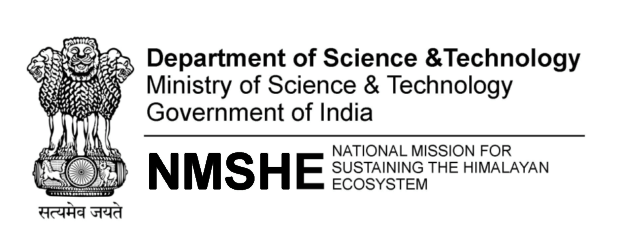News
NE temperature increased by 0.08 degree in past decade
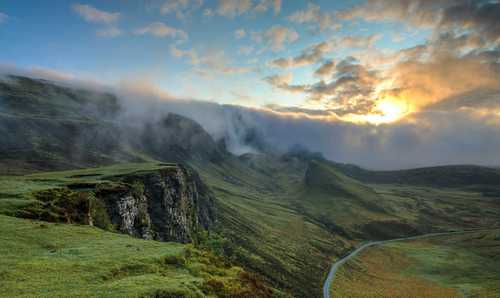
Agartala: Northeast has recorded an increase in temperature by 0.08 degree Celsius in last decade along with static dispersion of seasonal weather phenomena in the region, Regional Director ICAR, Northeast, Dr S V Ngachan on Tuesday said.
Talking to UNI here, DR Ngachan said that Barapani in Meghalaya alone had recorded a rise in temperature by two degrees Celsius in last decade and rainfall in world famous Cherrapunji (highest rainfall area of India) has reduced substantially over the year changing the complete weather cycle of the region.
He also said the climate change has affected the northeast, one of the hotspots of bio-diversity, weather cycle, annual rainfall pattern and seasonal variation over past few years, which ultimately influenced the longer summer and shorter winter phenomenon.
Dr Ngachan underlined that the warm weather had now become good for agricultural production and several sub-tropical agricultural crops was now cultivated in northeastern states. Referring to the potable water scarcity in Tripura, Joint Director and noted agriculture scientist of ICAR Tripura Dr M Dutta said the state is blessed with plenty of rainfall, but because of lack of storage facilties water flows down to Bangladesh and as a result, Tripura face water crisis pre and post monsoon days. Not only the potable water sources, because of the rise of all 14 river beds the water storage capacity had reduced substaintially and that also affected the irrigation system in agricultural sector,” Dr Dutta said, adding that only 22 per cent of the area of Tripura was under irrigation. (UNI)
Climate change here and now
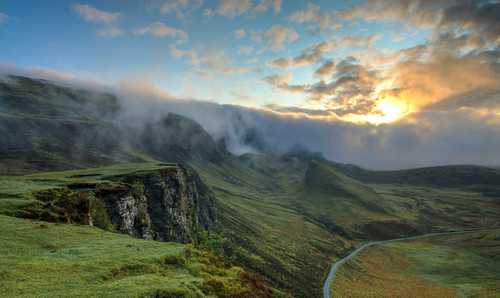
Climate change is no longer just about rising temperatures but also about the unpredictability of weather conditions. We are seeing climate change right here, right now. The entire country has been having unseasonal rains. This is the planting season. Normally we don’t have the monsoons until early or mid June. But this is April and the rains have been with us every single day for nearly half a month. And instead of light spring showers we are having torrents with the possibility of seeds being washed away with the torrential rain waters. Strawberry- growing is now a good business venture in Meghalaya but this year the rains have played spoilsport and farmers fear that they may not even get their investments back. Without a viable crop insurance mechanism in place, the plight of farmers will only exacerbate. Indeed, farmers bear the worst brunt of climate change.
Changes in temperature, amount of carbon dioxide (CO2), and the frequency and intensity of extreme weather could have significant impacts on crop yields. While warmer temperatures may make many crops grow more quickly, they could also reduce yields. Crops tend to grow faster in warmer conditions. Extreme events, especially floods and droughts, can harm crops and reduce yields. Many weeds, pests and fungi thrive under warmer temperatures, wetter climates, and increased CO2 levels. Currently, farmers spend huge amounts on pesticides in this country in the hope of preventing their crops from pests and fungal diseases. But this is dangerous as deadly chemicals leach into our food chain.
Heat waves, which are projected to increase under climate change, could directly threaten livestock. A number of states have reported huge losses of animals during the heat wave in some states last year. Heat stress affects animals both directly and indirectly. Over time, heat stress can increase vulnerability to disease, reduce fertility, and reduce milk production. Climate change also increases the prevalence of parasites and diseases that affect livestock. The earlier onset of spring and monsoon and also warmer winters could allow some parasites and pathogens to survive more easily. The Meghalaya Government has invested much in Fisheries with the intent of making the state self sufficient in fish production by 2025. At present Meghalaya is dependent on denatured fish from Andhra Pradesh. But the unprecedented floods in Garo Hills in September last year led to a huge loss for farmers as all the fish ponds too were flooded. Dealing with unpredictable weather conditions will be the biggest challenge for Governments. Is the Government of Meghalaya prepared to deal with these erratic weather conditions? What, for instance are the emergent problems faced by farmers in Meghalaya apart from reduced productivity? The Government of Meghalaya had made tall claims about going organic. Has this sloganeering converted into a pragmatic action plan for reduced chemical fertilisers? What are the sources for organic manure in the State? We are yet to see an action plan on organic farming in Meghalaya.
Assam most vulnerable to climate change in Indian Himalayas

GUWAHATI: Among the 12 states in the Indian Himalayan Region (IHR), Assam is the most vulnerable to the changing climate, a Department of Science and Technology (DST) vulnerability assessment has found.
The study titled “Climate Vulnerability Assessment for the Indian Himalayan Region Using a Common Framework” was done by the Indian Institute of Technology-Guwahati and the Indian Institute of Technology-Mandi in collaboration with the Indian Institute of Science, Bengaluru, to help understand climate change vulnerabilities which could inform development of adaptation strategies and ecosystem management for the Himalayan region. The study was part of the Swiss-funded Indian Himalayas Climate Adaptation Programme (IHCAP).
The assessment is significant for India as a majority of its population is dependent on agriculture which requires water. The Himalayas are a source of many rivers which supply this water.
Bordering eight countries, the Himalayan mountain range is the tallest in the world. It covers an area of about 4.3 million square kilometres and nearly 1.5 billion people depend on it for water, food and energy. In India, the IHR spans across 12 states — Jammu and Kashmir, Himachal Pradesh, Uttarakhand, Sikkim, Arunachal Pradesh, Nagaland, Manipur, Mizoram, Tripura, Meghalaya, Assam and (hill districts of) West Bengal.
The vulnerability assessment was done on the basis of four major factors: socio-economic, demographic status and health, the sensitivity of agricultural production, forest-dependent livelihoods and access to information services and infrastructure.
The assessment stated that the “vulnerability index is found to be the highest for Assam and Mizoram, followed by Jammu and Kashmir, Manipur, Meghalaya and West Bengal, Nagaland, Himachal Pradesh and Tripura, Arunachal Pradesh and Uttarakhand”. Sikkim was found to be the least vulnerable among all these states.
The study explained that states with a low per capita income, low area under irrigation, low area under forests per 1,000 households and high area under open forests have received a high vulnerability score.
The report, however, emphasised that “vulnerability is a relative measure, which means that this assessment does not portray Sikkim, Uttarakhand or Arunachal Pradesh as having a low vulnerability in an absolute sense”.
India: ‘World’s wettest place’ suffers water shortage
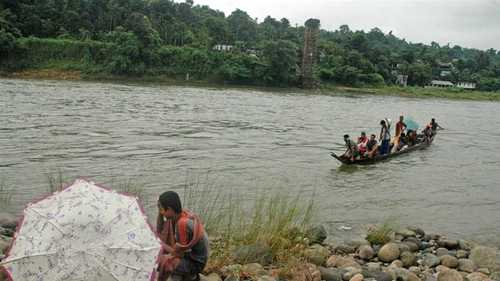
Meghalaya state, India – For those recently debating climate change at the global summit in Paris, the coinciding deluge in India’s southern city of Chennai seemed a powerful illustration that the gathering urgently needed to succeed in its aims.
While flooding hit the south, an increasing lack of water in Cherrapunji, a northeastern town which was once the world’s wettest place, is causing growing concern among residents.
Both Indian examples point to the vicissitudes of climate change on our planet in a country where a rising population always creates huge pressures on the environment.
In 1861, Cherrapunji, known to locals as Sohra, created a world record with 22,987mm of rainfall in a year.
More than 150 years later, and experiencing an average annual rainfall of 11,430mm, it is still the second wettest place in the world.
Mawsynram, a village just six kilometres away and boasting an average annual rainfall of 11,887km, is now considered the dampest place on the globe.
However, the current rainfall in Cherrapunji, located in Meghalaya state, is just one third of what it was in the 1970s.
Residents rue rising Shillong temperature
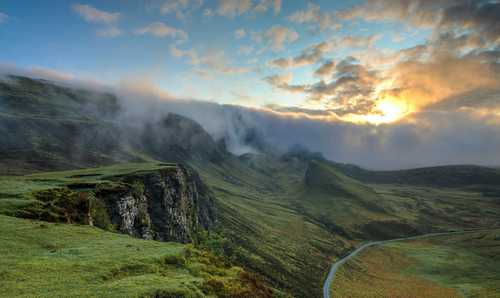
A maximum temperature at around 28 degrees is too hot for hill station Shillong, the state capital of Meghalaya that stands at an altitude of 4,908 feet (1,496m) above sea level, and is known to be a destination providing “plenty of natural air conditioning”.
By Rining Lyngdoh
Shillong, April 11: A maximum temperature at around 28 degrees is too hot for hill station Shillong, the state capital of Meghalaya that stands at an altitude of 4,908 feet (1,496m) above sea level, and is known to be a destination providing “plenty of natural air conditioning”.
While people have lost lives in some parts of the country as the heat wave swept eastern and central India leading to temperatures rising over 40 degrees Celsius, Shillong is slowly feeling the same over the years. Thanks to climate change.
After experiencing cold weather coupled with thundersqualls and rain a week ago, the temperature has suddenly risen in Shillong in the past few days.
Last week, squalls and rain hit the city and other places damaging several houses and crops.
Shillong has always been considered a suitable destination for tourists during spring and summer. This is because one can feel the presence of natural air conditioning unlike in other parts of the country where people have to rely on an electric fan or air conditioner to cool themselves from the burning heat.
But Shillong’s weather is no longer like it was in the past, in view of climate change, which has led to global warming across the globe.
Shillong is just 10km from Shillong Peak, which is the highest point at 6,449 feet (1,966m) above sea level.
The city has never experienced temperatures over 30 degrees, except 43 years ago.
The kind of heat felt in the city today made many feel that the temperature might have touched 30 degrees Celsius. Students and elders alike used their umbrellas to shield themselves from the heat, while children opted for ice creams to cool themselves. The wind helped pedestrians cool down a bit.
An official in the Indian Meteorological Department here, told The Telegraph that the maximum temperature recorded in the city today was 28.1 degrees Celsius.
“Shillong has never experienced temperatures beyond 30 degrees Celsius, except in 1973. The highest temperature ever recorded in the city was in April 1973, at 30.2 degrees Celsius,” an official said.
The official said the second highest temperature was 29.7 degrees Celsius, recorded in June 1999 followed by 29.5 degrees Celsius in May 1979 and April 2014 and 28.7 degrees Celsius in April 2014.
Sources said in the last one week the temperature in Shillong has risen from 24.5 degrees Celsius on April 6 to 27.9 degrees Celsius on April 10.
The sources observed that the temperature of Shillong might increase further in the coming days if the city receives no rain.
Climate change increases India’s vulnerability to extreme weather events: Report
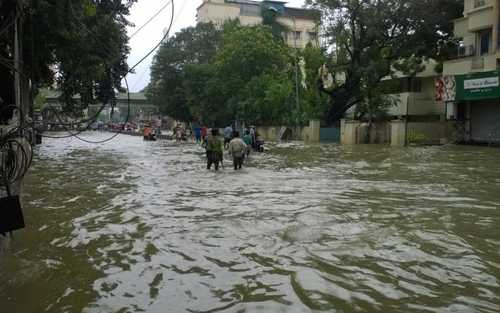
- India is all set to submit the second biennial update report (BUR) to the United Nations Framework Convention on Climate Change (UNFCCC) which takes stock of India’s action to tackle climate change and notes that India is on track to achieve the major milestones promised.
- The first BUR report was submitted in December 2015. The draft of the second BUR reveals that over 5,800 people and thousands of animals died across India during 2014-17 due to extreme weather events whose frequency is rising due to climate change.
- The draft report enumerates impact of climate change on pattern of India’s rainfall, and temperature while expressing concerns about India’s climate-sensitive sectors like agriculture and forestry for livelihood.
In just four years, over 5,800 people and thousands of animals in India have lost their lives to “extremes of temperature, rainfall and tropical cyclones.” Increase in frequency and intensity of such disasters related to climate change impacts on the weather systems is a serious concern, notes the draft of India’s report to United Nations Framework Convention on Climate Change (UNFCCC).
A final version of the report, ‘Second biennial update report (BUR) to the UNFCCC’, which is to be submitted during the ongoing 24th meeting of the Conference of Parties (COP-24) to the UNFCCC at Katowice, Poland. The meeting from December 2-14 is significant as it is expected to finalise the guidelines for implementation of the Paris Climate Agreement. At Paris Agreement in 2015, the world agreed to aim to limit the rise in global average temperature to well below two degree Celsius above pre-industrial levels and pursue efforts to limit the temperature increase to 1.5 degree Celsius above pre-industrial levels.
India’s 17-member delegation to CoP 24 is led by environment minister Harsh Vardhan, said that India expects that COP-24 should be able to frame guidelines, which are pragmatic and gives due consideration to challenges and priorities of developing countries inter alia different starting points as compared to developed countries, their vulnerabilities, development priorities like eradication of poverty, food security, energy access and providing health infrastructure.
“COP-24 should give equal focus to all agenda items, and the outcome of COP-24 should be balanced, inclusive, comprehensive and consistent with the principles and provisions of Convention and its Paris Agreement” said Harsh Vardhan.
India has over 17.6 percent of the world’s population living on 2.4 percent of the world’s geographical area. India is one of the most vulnerable countries to climate change and the report is significant as about 49 percent of the population depends on agriculture and other climate-sensitive livelihood activities.
The report presents an overall look at the threats that India’s weather systems, ecological dynamics and natural resources already faces from climate change, the impacts that it is already having, update on India’s greenhouse gas emissions and efforts for climate change adaptation and mitigation like India’s massive renewable power programme. It also expresses concerns about the international finance required by India to effectively tackle climate change.
Last month, the draft report BUR was first reported by Business Standard newspaper which emphasised that India is well on the trajectory to achieve two of its three major commitments under the Paris Agreement. It stressed that India is on its way to achieving the commitment regarding reduction in the greenhouse gas emission intensity by 33-35 percent below 2005 levels by 2030 and having 40 percent of its power capacity from non-fossil fuel resources. But where it is falling short, for now, is the promise of an additional carbon sink of 2.5 to 3 billion tonnes of carbon dioxide equivalent through additional forest and tree cover by 2030.
The draft report notes that India has witnessed, “many instances of extremes of temperature, rainfall and tropical cyclones in recent years.”
As per the data about the ‘weather extremes in India (during 2014-2017)’, over 5,800 people and 10,000 cattle died due to extreme weather events like cold wave, heat wave, heavy rainfall resulting in floods, hailstorm, lightning and cyclonic storms. Of these, at least 3,650 were due to heat waves and cold waves alone.
For the period 1961-2013, the frequency, total duration of heat waves per season and maximum duration of heat waves increased over India during the summer season, revealed the draft while adding that the duration of heat waves over central and north-west India has gone up by about five days over the past 50 years.
“The frequency of occurrence of hot days during the pre-monsoon season shows a significant increase over the east and west coasts of India and interior peninsula. Likewise, an increasing trend in the frequency of hot nights is seen in the east coast, west coast and north-west India. The frequency and duration of heat waves over north-west India and east coast of India have also increased,”said the report.
Shillong in grip of hot, humid weather
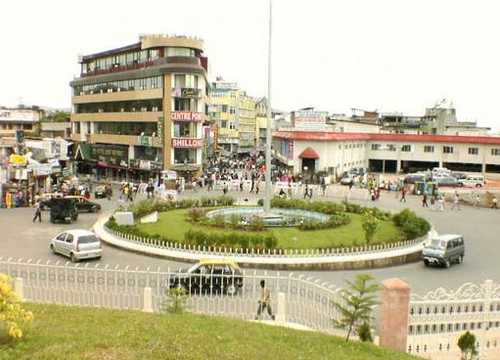
SHILLONG: While several other parts of the country is experiencing heavy rainfall, the capital city of Shillong is in the grip of hot weather.
According to the Indian Metrological Department (IMD), the city did not record any rainfall since the morning of August 18 till Sunday evening . The maximum temperature recorded on August 18 was 27.6 degree Celsius which is 4 degree Celsius more than the usual temperature for this time of the year. The IMD has also observed that certain places in parts of the country including Meghalaya, temperatures were above normal ranging from 1.6 degree Celsius to 3 degree Celsius. As per the data recorded by the IMD, the temperature in Shillong city was unusually hot. While, the normal maximum temperature for this time of the year in the city is around 25 degree Celsius the city has been recording more than the normal heat. Even the normal minimum temperature is slightly on the higher side.
Meanwhile, the IMD has forecast that the temperature will go down as the week progresses. There is also prediction of rainfall. While other parts of Meghalaya have been experiencing heavy rain the capital city has received only thundershowers in spells during the past week. Moreover, the IMD in its all India weather warning bulletin has predicted that on August 21, heavy rain at isolated places is very likely over Meghalaya. The IMD has also predicted widespread rain for Assam and Meghalaya from August 20 to 22. As per data of the IMD, from August 9 to 15, Meghalaya received deficient rainfall, ranging from 20 percent to 59 percent.
Sweating in Shillong: Why temperatures in India’s biodiversity hotspot are rising
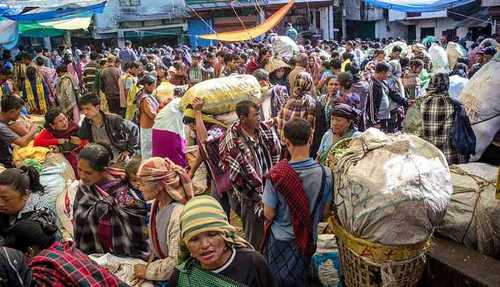
Sitting in the glass-and-concrete State Convention Centre in the capital of hilly state, Meghalaya, participants of a media workshop on climate change were feeling sweaty. The convention centre is not air-conditioned nor does it have ceiling fans. For the comfort of guests, some pedestal fans were plugged in.
“Why are we sweating in Shillong?” asked state information technology minister Dr M Ampareen Lyngdoh. The question may sound strange for those who have read in tourist brochures and text books about the wettest places on the planet being in Meghalaya and about its round-the-year cool weather.
The answer to this question came in the form of a new study done by researchers from the Water and Climate Lab at Indian Institute of Technology (IIT), Gandhinagar. The study has shown that air temperature in the state is rising at the rate of 0.031 degree per year. The trend is consistent from 1981 to 2014, barring the years 1991 and 1992. This translates into 1 degree centigrade rise between 1981 and 2014, which is quite significant. Future projections indicate similar rise over next two decades.
The state has also been witnessing highly fluctuating frequencies of hot days, hot nights, cold days and cold nights. “The number of hot days and nights show an increasing trend while that of cold days and cold nights show a declining trend. These are indications of a consistently warming region,” pointed out lead author Dr Vimal Mishra while presenting results of the study commissioned by the state government. “The higher number of hot night frequencies is a matter of concern for the state.”
Based on historic and observed data as well as computer models, the study has projected changes over short-term (2013-2040), mid-term (2041-2070) and long-term (2071-2100) for the state. It is a high-resolution study in the sense that projections have been made for grids of 5X5 km size, so as to help in vulnerability assessment for each grid and adaptation planning at local level.
Future projections show an increasing temperature rise under different scenarios. Under these projections, the rise in maximum temperature in Meghalaya in the long term ranges from 2.65 degree to 3.8 degree, while the rise in minimum temperature will be between 2 degree and 3.5 degree in the long term. The increase in temperature may result in higher number of extreme hot days and nights. Under the extreme scenario projection, the number of hot days could be as high as 100 a year. Similarly, there may be a decrease in extreme cold days and nights.
“The state has already seen a rise of temperature of 1 to 1.5 degree in the past three decades, and the projections point to a similar rise by 2040. If temperature in Meghalaya will rise by about 3 degree rise in a span of half a century, we don’t know what Meghalaya will be like in future – West Bengal or Assam?” wondered Dr Mishra.
There will be changes in the rainfall patterns too in future. The central plateau region is projected to experience an increase in rainfall at a higher rate than the rest of the state. The occurrence of extreme rainfall events will also show an upward trend under various projected scenarios. “The West Khasi hills which already receive very high precipitation are projected to face even higher rise in precipitation,” Dr Mishra added.
The changing climate in Meghalaya, he said, would have widespread implications for forests, water resources, biodiversity, agriculture, livestock and human health. For instance, due to significant rise in temperature, forest fires may go up while extreme rainfall events will increase risk of landslides in high altitude areas causing siltration of water bodies downstream. The rise in temperature will also threaten endemic plant species many of which are already on the verge of extinction. Rainfed agriculture in the state will be adversely hit with crop yields and production declining. Higher temperature will also induce premature breaking of insects and pests.
“Meghalaya has some of the most vulnerable districts to current climate risks and long term climate change in the region,” pointed out Prof NH Ravindranath of Indian Institute of Science, Bangalore. “Sectors like agriculture, forests, fisheries, horticulture are already subjected high climate risks currently and will be highly vulnerable to climate change risks in future. We need to prepare both incremental as well as transformational adaptation plans to make based on vulnerability assessments.”
The workshop was jointly organized by the Department of Science and Technology, Indian Himalayas Climate Adaptation Programme (IHCAP) and Centre for Media Studies.
Why are we sweating in Shillong?
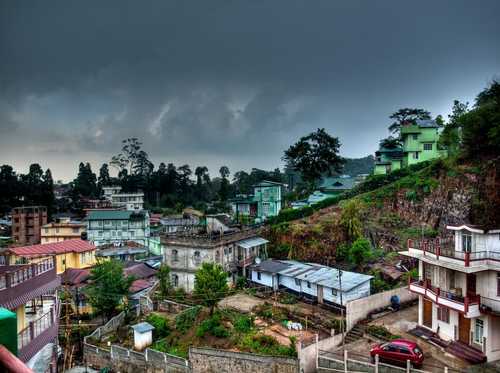
Sitting in the glass-and-concrete State Convention Centre in the capital of hilly state, Meghalaya, participants of a media workshop on climate change were feeling sweaty. The convention centre is not air-conditioned nor does it have ceiling fans. For the comfort of guests, some pedestal fans were plugged in.
Why are we sweating in Shillong? Asked state information technology minister Dr M Ampareen Lyngdoh. The question may sound strange for those who have read in tourist brochures and text books about the wettest places on the planet being in Meghalaya and about its round-the-year cool weather.
The answer to this question came in the form of a new study done by researchers from the Water and Climate Lab at Indian Institute of Technology (IIT), Gandhinagar. The study has shown that air temperature in the state is rising at the rate of 0.031 degree per year. The trend is consistent from 1981 to 2014, barring the years 1991 and 1992. This translates into 1 degree centigrade rise between 1981 and 2014, which is quite significant. Future projections indicate similar rise over next two decades.
The state has also been witnessing highly fluctuating frequencies of hot days, hot nights, cold days and cold nights. “The number of hot days and nights show an increasing trend while that of cold days and cold nights show a declining trend. These are indications of a consistently warming region,” pointed out lead author Dr Vimal Mishra while presenting results of the study commissioned by the state government. “The higher number of hot night frequencies is a matter of concern for the state.”
Based on historical and observed data as well as computer models, the study has projected changes over short-term (2013-2040), mid-term (2041-2070) and long-term (2071-2100) for the state. It is a high-resolution study in the sense that projections have been made for grids of 5 X5 km size, so as to help in vulnerability assessment for each grid and adaptation planning at local level.
Future projections show an increasing temperature rise under different scenarios. Under these projections, the rise in maximum temperature in Meghalaya in the long term ranges from 2.65 degree to 3.8 degree, while the rise in minimum temperature will be between 2 degree and 3.5 degree in the long term. The increase in temperature may result in higher number of extreme hot days and nights. Under the extreme scenario projection, the number of hot days could be as high as 100 a year. Similarly, there may be a decrease in extreme cold days and nights.
“The state has already seen a rise of temperature of 1 to 1.5 degree in the past three decades, and the projections point to a similar rise by 2040. If temperature in Meghalaya will rise by about 3 degree in a span of half a century, we don’t know what Meghalaya will be like in future – West Bengal or Assam?,” wondered Dr Mishra.
There will be changes in the rainfall patterns in future. The central plateau region is projected to experience an increase in rainfall at a higher rate than the rest of the state. The occurrence of extreme rainfall events will also show an upward trend under various projected scenarios. “The West Khasi hills which already receive very high precipitation is projected to face even higher rise in precipitation,” Dr Mishra added.
The changing climate in Meghalaya, he said, would have widespread implications for forests, water resources, biodiversity, agriculture, livestock and human health. For instance, due to significant rise in temperature, forest fires may go up while extreme rainfall events will increase risk of landslides in high altitude areas causing siltation of water bodies downstream. The rise in temperature will also threaten endemic plant species many of which are already on the verge of extinction. Rain-fed agriculture in the state will be adversely hit with crop yields and production declining. Higher temperature will also induce premature breaking of insects and pests.
“Meghalaya has some of the most vulnerable districts to current climate risks and long-term climate change in the region,” pointed out Prof. N.H. Ravindranath of Indian Institute of Science, Bangalore. “Sectors like agriculture, forests, fisheries, horticulture are already subjected high climate risks currently and will be highly vulnerable to climate change risks in future. We need to prepare both incremental as well as transformational adaptation plans to make based on vulnerability assessments.”
The workshop was jointly organised by the Department of Science and Technology, Indian Himalayas Climate Adaptation Programme (IHCAP) and Centre for Media Studies. (India Science Wire)


